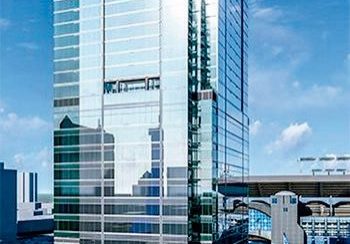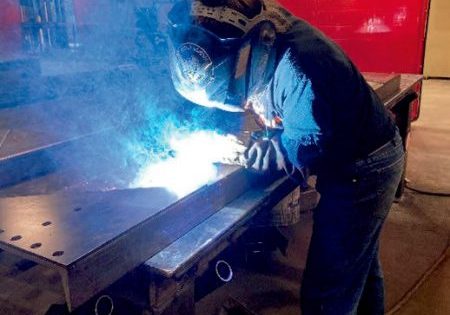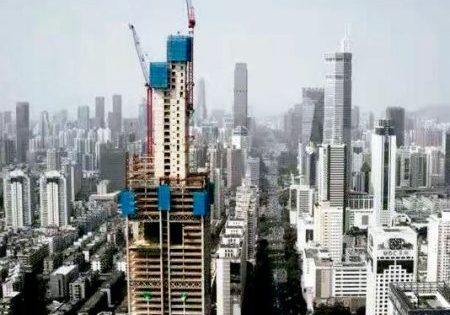A new association and pandemic-response technology for Chennai metro and Hyderabad airport join metro work.
Jan 1, 2021
Industry Association EECMAI Launches
The Elevator & Escalator Component Manufacturers Association of India (EECMAI) registered with the Ministry of Corporate Affairs on September 10, 2020. Members met virtually on September 19, 2020, and unanimously elected Suraj Thodimarath of Wittur president, Hiren Panchal of Apson Inc. vice president, Kumara Swamy of Monteferro secretary, Nayan Movaliya of Tectronics Engineers joint secretary, Abey George of Fermator Group treasurer and Ashok Subhedar of DSA Electro Controls Pvt. Ltd. director-ethics. Thodrimarath said:
“Among all the nations in the world, India is best placed to emerge as an alternate global powerhouse for the manufacturing of elevator and escalator (E&E) components that comply with international safety and performance standards. The timing of the formation of EECMAI is fortuitous, in the sense that it coincides with the attempt of global businesses to de-risk their supply chain from single-country dependencies. EECMAI will drive initiatives that will help the Indian E&E industry expand beyond India to become an integral part of the international supply chain. EECMAI will establish relationships with other E&E associations and appropriate government agencies to promote and protect the interests of the users and the industry.”
Chennai Metro Installs Foot Controls for Lifts
The metro rail system in Chennai, India, in an effort to reduce the spread of COVID-19 infections, has installed foot-operated controls for elevators at the 32 stations of the 45-km line, the Times of India reported in September 2020. In addition, foot-operated elevators are being installed at the nine stations of the metro’s 9-km Phase 1 expansion, which will link part of North Chennai to the system and is scheduled to open by the end of 2020. The project was initiated at 20 stations, including the busiest, Alandur, Central and Airport. The remaining 12 were expected to be finished within the first few days of October. The new mechanisms allow commuters using elevators to tap a button on the floor of the lift with their feet, rather than touch a button that could harbor pathogens.
In May, the metro system installed foot-operated elevators at its head office in Koyambedu, and, after receiving feedback from users, it began installing foot controls at its stations, which have two to four lifts connecting street level to concourse and platform levels. Other touch-free technologies include QR-code tickets, which can be purchased through an app, and travel card readers that allow passengers to simply tap their smartcards to recharge.
Hyderabad International Airport Elevators Go Touchless
All passenger elevators at GMR Hyderabad International Airport have been equipped with touchless technology that allows passengers to use hand gestures to call and direct elevators, The Indian Express was among outlets to report in September 2020. Automating all passenger elevators followed a successful pilot program. Based on infrared technology, the system allows users to wave their hands over a sensor to call an elevator and point a finger toward a floor number to take them to a desired destination. The airport handles more than 20,000 domestic passengers daily, more than six times the number it handled prior to recommencing operations on May 25 after a pandemic-related closure that affected airports throughout India. Touchless elevators complement other airport innovations such as “zero-contact” check-in and sanitation systems that implement ultraviolet light.
Indian Metro Projects Promise Improvements
Metro projects in India are being touted as offering easier travel through improvements, including better vertical transportation at stations, multiple sources have reported. The Times of India reported in November 2020 that the Delhi Metro Rail Corp. (DMRC) was in the process of working on its Phase-IV project, which will have better air-conditioning, lighting and security, and, notably, bigger elevators and escalators. A DMRC official said the current elevators typically can carry 8-13 people, but Phase-IV lifts will be able to accommodate 20 passengers, with select stations getting lifts that will carry up to 26 riders. Phase-IV stations will also have escalators installed in sets of two, to allow both upward and downward travel. In total, Phase-IV stations will have 295 elevators and 644 escalators. Current DMRC stations have a total of 935 elevators and 1,030 escalators.
DMRC has also submitted a “reworked” project plan for the cities of Thiruvananthapuram and Kozhikode, which had been delayed 35 months, The Hindu reported in November 2020. The Kerala Rapid Transit Ltd. board had approved DMRC’s plan, which involves a public-private partnership (PPP). Under the PPP, the project will implement automatic fare collection and operation of elevators and escalators. The proposal must be approved by the Kerala Cabinet.
Get more of Elevator World. Sign up for our free e-newsletter.







